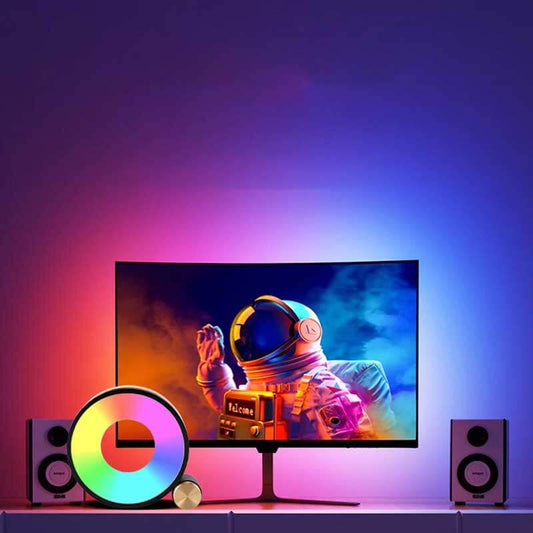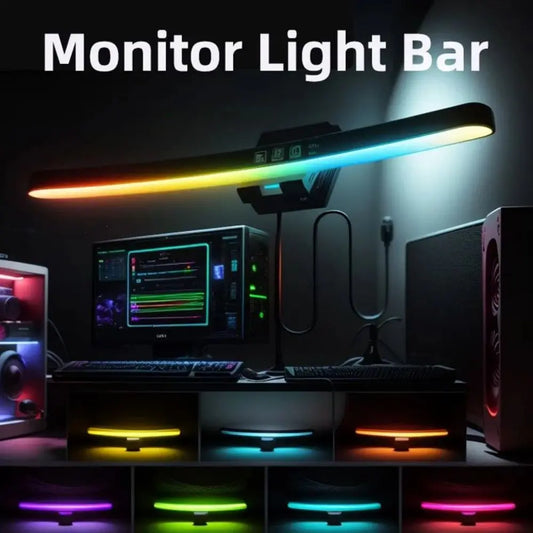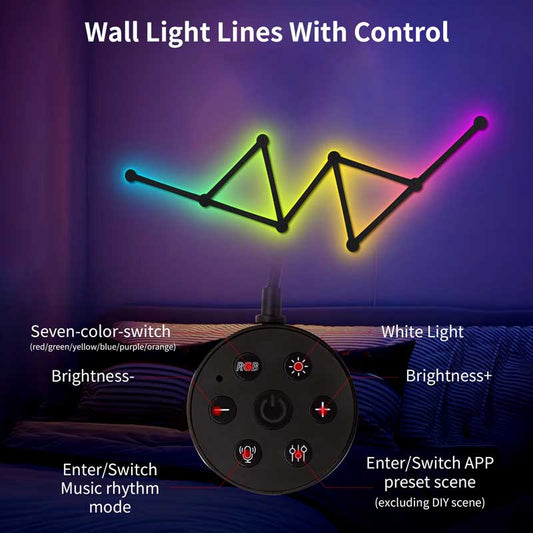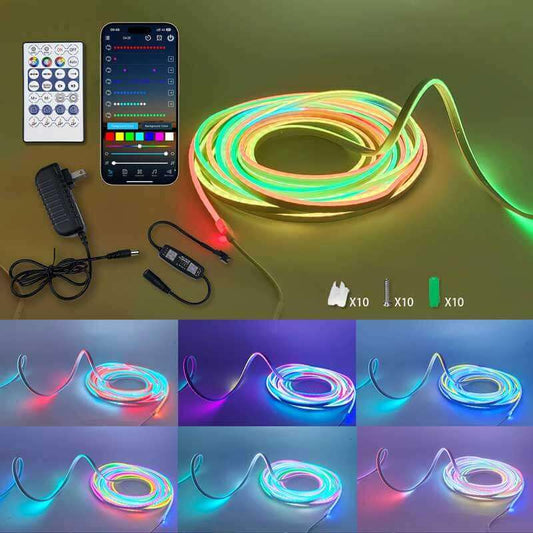Is the response time noticable between IPS and OLED?
Partager
The response time of a display is one of the key factors that affect how quickly it can render fast-moving content, such as gaming or action-packed videos. It refers to how fast a pixel can change from one color to another. A lower response time typically results in clearer, sharper visuals with less motion blur or ghosting, which is crucial for competitive gaming and smooth video playback.
When comparing IPS (In-Plane Switching) and OLED (Organic Light-Emitting Diode) in terms of response time, there are some important distinctions that can affect the gaming experience. Here's a breakdown of how response times differ between the two technologies and whether you'll notice a significant difference.
Response Time in IPS Displays
- Typical Response Time: Most IPS panels have a response time between 4ms to 8ms (some high-end IPS monitors can reach 1ms).
- How it Affects Gaming: IPS panels are great for color accuracy and wide viewing angles, but traditionally, they had slower response times than TN (Twisted Nematic) panels, which are known for their fast response times. However, with newer advancements, many gaming IPS monitors now offer 1ms response time (especially in higher-end models).
- Noticeability: In general, you won't notice a significant lag or ghosting in most gaming scenarios with modern IPS panels, particularly when gaming on high-refresh rate monitors (120Hz, 144Hz, or 240Hz). The blur effect that might be noticeable in the past is now minimized thanks to innovations in overdrive technology and higher refresh rates.
Response Time in OLED Displays
- Typical Response Time: OLED displays have an incredibly fast response time, typically around 0.1ms to 1ms, due to the nature of the technology.
- How it Affects Gaming: Each pixel in an OLED display is self-emissive, meaning it generates its own light rather than relying on a backlight. This results in extremely fast pixel response, which is particularly beneficial for gaming. As a result, OLEDs have zero motion blur and no ghosting, providing an ultra-smooth experience during fast movements in FPS games, racing games, or any high-speed genre.
-
Noticeability: The response time difference between OLED and IPS is noticeable, but it largely depends on the context:
- If you're playing fast-paced competitive games (e.g., FPS or fighting games), OLED will provide a more fluid experience with less motion blur compared to IPS panels with slower response times.
- For casual gaming or general media consumption, the difference in response time between OLED and IPS might not be noticeable. Even with IPS, newer models have a low enough response time (1ms to 5ms) to avoid noticeable ghosting or lag in most games.
Key Differences Between IPS and OLED Response Times
| Aspect | IPS Display | OLED Display |
|---|---|---|
| Response Time | Typically 4ms to 8ms (Some models up to 1ms) | Around 0.1ms to 1ms |
| Motion Blur | Slight blur in fast-moving content | Virtually no blur due to self-emissive pixels |
| Ghosting | Occasional ghosting on slower panels | No ghosting, pixel response is almost instantaneous |
| Suitability for Gaming | Good for most gaming, especially with high refresh rates | Best for fast-paced, competitive gaming |
| Viewing Experience | Excellent for color accuracy and wide viewing angles | Perfect blacks and vivid colors for stunning visuals |
When is the Difference Noticeable?
-
Competitive Gaming: In competitive gaming, especially in first-person shooters (FPS), racing, and fighting games, OLED’s ultra-fast 1ms response time becomes a key advantage, offering faster pixel transitions and reducing motion blur and ghosting. The difference will be noticeable in quick-turning actions or fast movements where IPS displays might show a slight motion trail or ghosting on slower models.
-
Casual Gaming & Media Consumption: If you're just playing casual games, watching movies, or consuming media, the response time difference between IPS and OLED is less likely to be noticeable. Both offer a solid viewing experience, but OLED excels in providing deeper blacks, better contrast, and overall faster response, making it feel more fluid.
-
Visual Art/Content Creation: If you're into content creation or simply enjoy viewing content with stunning color accuracy, IPS panels are still great due to their wide color gamut and consistent color reproduction across viewing angles. OLED also offers exceptional color accuracy, but the primary difference will be black levels and contrast, where OLED outperforms IPS.
Is the Difference Worth It?
-
For Gamers: If you are a competitive gamer or enjoy fast-paced action games, upgrading to an OLED TV or monitor with 1ms response time is a worthy investment. The immediate responsiveness and lack of motion blur make OLED the preferred choice for the best gaming experience.
-
For Casual Use: For non-competitive gamers, or for use cases like movie watching or light gaming, an IPS panel with 1ms or 4ms response time should suffice. The visual quality and response time are still highly competitive, and you likely won’t notice any significant lag or ghosting.
Conclusion
The difference in response time between IPS and OLED displays is noticeable, especially in fast-paced gaming. OLED offers an exceptionally fast response time, resulting in clearer and more fluid gameplay, while IPS displays, though not as fast, have improved to offer excellent gaming performance with response times that are fast enough for most casual and competitive players.
If you're looking for zero motion blur and the best possible gaming performance, an OLED TV or monitor is the way to go. However, if budget or color accuracy is more important to you, IPS panels still deliver a fantastic experience with very competitive response times in modern models.




